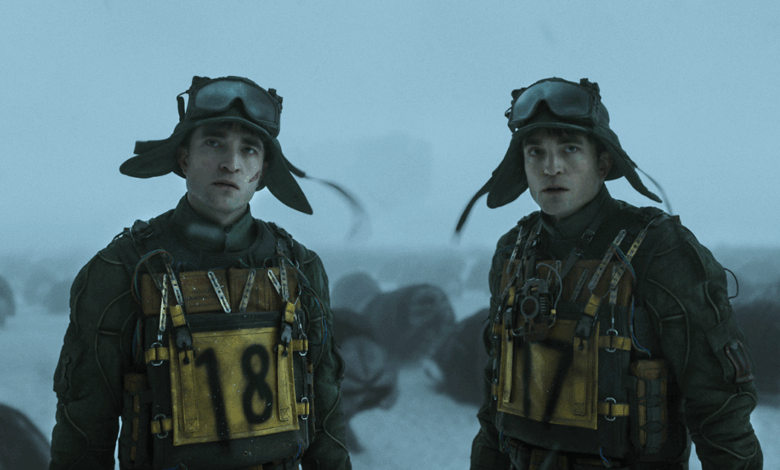‘Mickey 17’: Bong Joon-Ho’s Thrilling, Delightful Follow-Up to ‘Parasite’
The film takes on a particular new air of timeliness in our current climate

Julie Maescher ‘27 / Emertainment Monthly Staff Writer
Over the course of his two-decade-plus career, Bong Joon-Ho has established a strong suit for himself in crafting sharp indictments of late-stage capitalism and sociopolitical turmoil within an accessible, broadly entertaining genre package. From Memories of Murder to The Host to Snowpiercer, Bong’s films have reliably had a deft hand at using horror, action, and broad farce as vehicles for satirical allegory and political commentary. Expectations for Bong’s latest have been particularly sky-high after his brilliant thriller and class satire Parasite, a genuine word-of-mouth phenomenon that took the world by storm in 2019; after a slew of delays, his follow-up Mickey 17 is finally here. Bong’s latest is much closer in tone to his previous English-language films Snowpiercer and Okja, playing like a middle ground between the sci-fi spectacle of the former and the environmental commentary of the latter. It’s a thrilling, if messy, delight—a strange and hilarious swing for the fences that managed to slip through the cracks of an increasingly risk-averse Hollywood system.
Adapted from Edward Ashton’s 2022 novel Mickey 7, Mickey 17 takes place in a future where a new type of cloning technology referred to as “human printing” has been invented. The practice is outlawed on Earth due to the wide array of ethical controversies set off by its invention, but it is allowed in space, where a slew of people are heading to build a new life after becoming fed up with the rapidly decaying conditions on Earth. Enter Mickey Barnes (Robert Pattinson), a macaron salesman who takes a loan from the wrong people and finds himself on the run; he flees by signing up as an “expendable” on a mission into deep space to colonize the alien planet Niflheim, led by moronic and egomaniacal failed politician Kenneth Marshall (Mark Ruffalo) and his wife Ylfa (Toni Collette). Mickey’s job? Dying. Over and over again. Mickey is assigned to fatally dangerous tasks onboard the mission where it doesn’t matter if he dies in the process. Once he’s dead, Mickey will just be reprinted out of what looks like a giant 3D printer, complete with a fully intact set of memories from his previous iterations. We see Mickey live and die and live again 16 times over, as he strikes up a sweet romance with fellow passenger and security officer Nasha (Naomi Ackie).
On his 17th go-around, however, things go sideways when Mickey unexpectedly survives one of his death missions; upon making his way back to the ship, he finds himself face to face with his next iteration, Mickey 18 (Pattinson again, sharing the screen with himself). This immediately creates a problem for both Mickeys; Marshall doesn’t take kindly to the idea of “multiples”, and the two Mickeys would be killed instantly if caught. Mickey 17 and 18 are total opposites in personality; 17 is passive and compliant in his disposability on the mission, while 18 is more aggressive and dominant in his actions. Despite their differences, the two reluctantly agree to work together in order to keep their dual presence hidden, devising a plan to alternate between each other in death missions. This plan doesn’t hold for long, however, as 18’s motivations take a turn towards attempting to rebel against Marshall and his colonizing plans.
Mickey 17 certainly can’t be mistaken for being subtle in its satire; the buffoonish dictatorianism of Marshall and his devoted cult of followers unmistakably call to mind a certain current president, and although the film completed shooting in 2022, the film takes on a particular new air of timeliness in our current climate. It helps that the commentary avoids being overly heavy-handed or didactic, instead opting for what’s frequently the goofiest version of itself possible. Ruffalo gleefully leans into the opportunity to ham things up and play up the sheer ridiculousness of his character, augmenting his performance with a goofy voice and heightened mannerisms. Marshall may undeniably evoke that president, yes, but it’s not necessarily a one-to-one imitation; he’s a play on countless other corrupt, failed politicians and warmongers from all over the world.
Speaking of heightened performances, Mickey 17 would hardly work if it weren’t for Pattinson’s delightful work to anchor the core of the film. In bringing to life the differences between the two Mickeys, Pattinson displays an innate gift for elastic physical comedy; he’s clearly having the time of his life as he plays with fun accents and contorts his body around, making distinct choices to easily delineate his two characters even when they’re sharing the same frame. Pattinson is the glue that holds the film together as it bounces from idea to idea; one could argue that Mickey 17 is perhaps overstuffed with too many moving pieces for its own good, but Bong keeps the plates spinning as smoothly as possible, toggling from comedy to sci-fi spectacle to tender romance. It’s a bit of a mess, but it’s the ideal kind of mess—ambitious, inventive, and always fascinating. There’s a go-for-broke zaniness to it that we don’t often see from major studio productions of this scale these days. And at the core of it all is a timely, resonant story of finding self-fulfillment in the face of resignation and subjugation. Maybe not every swing lands in Mickey 17, but it’s always thrilling to watch the ride unfold.